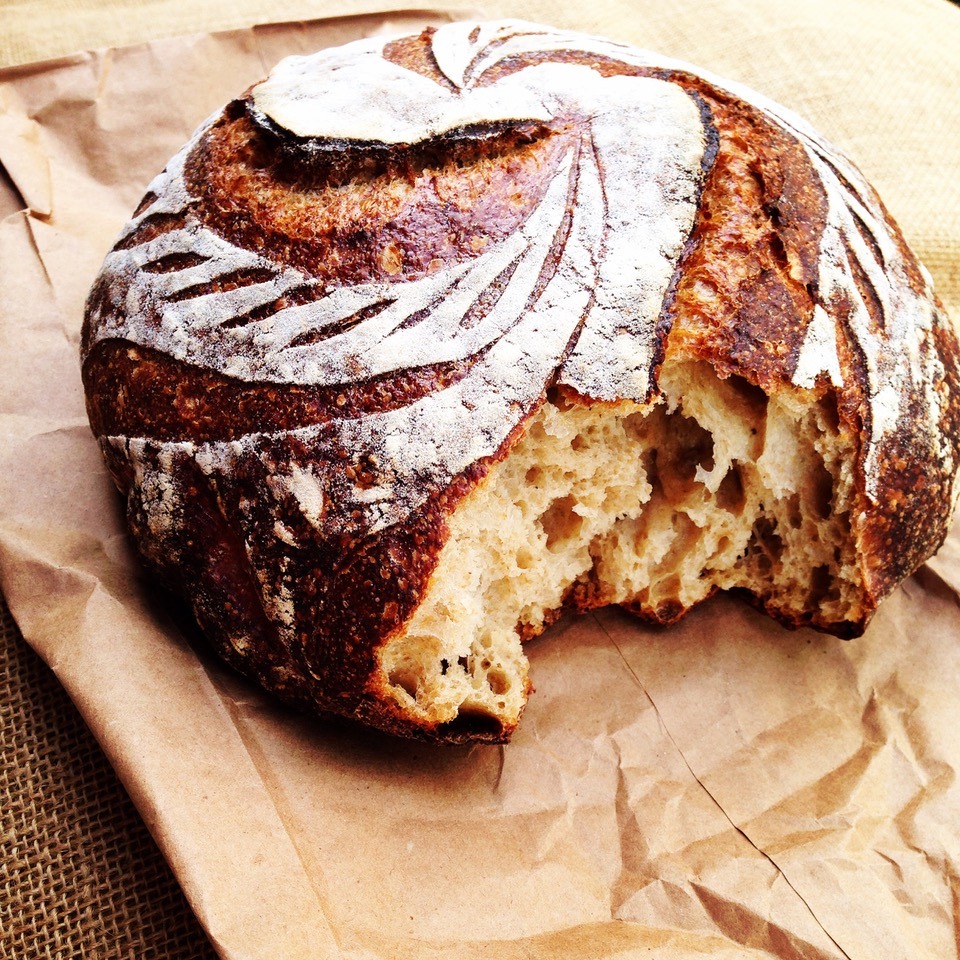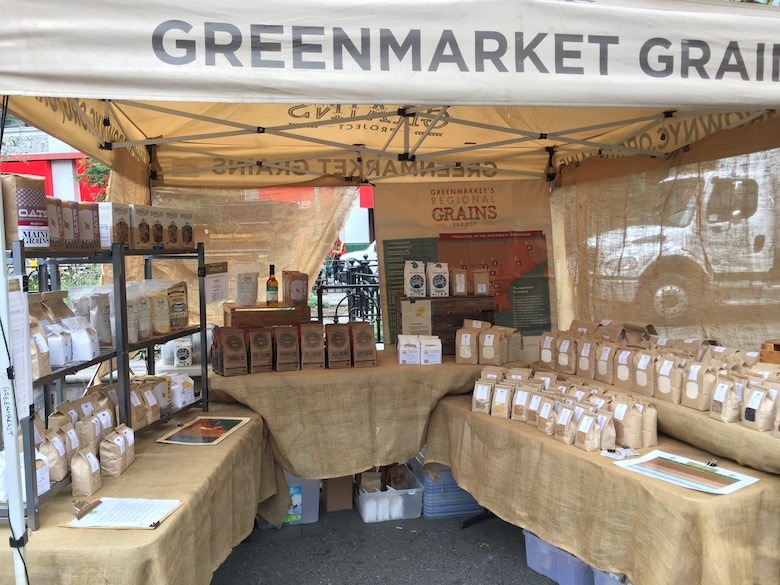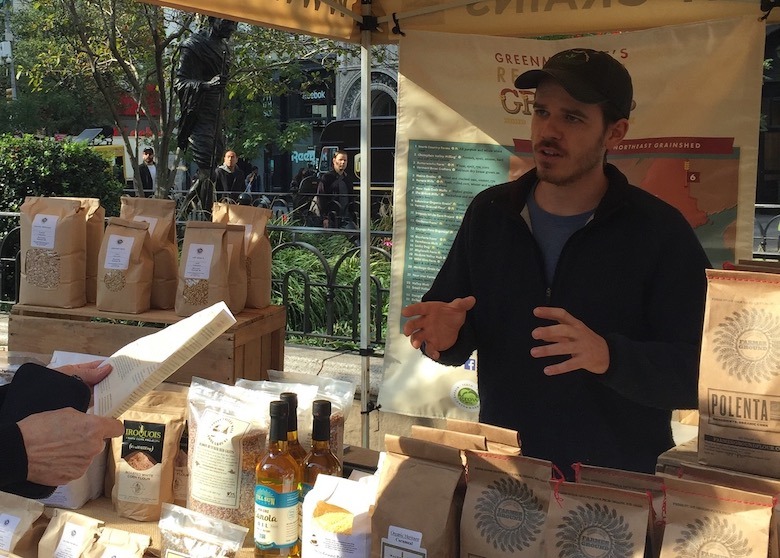Local Grains and the Locavore’s Changing Landscape
Given the abundant accessibility and low cost of industrially produced foods, it’s not surprising that so few Americans subsist entirely on a regional diet. Fast food, prepared meals and packaged goods have come to define what Americans eat. And yet, the locavore movement is booming. The number of farmers’ markets in the United States has increased two and a half-fold since the USDA began collecting information 30 years ago. Moreover, as they are being introduced to lower income communities the reputation of these markets is evolving from that of elite privilege to the status quo. Many conscious consumers have joined CSA programs to purchase local; others apply pressure to their nearby supermarkets and restaurants to shift their purchasing to local supply chains; and still more grow their own food, getting as localized as one possibly can. The growing popularity of sustainability-minded fast casual chains such as Sweetgreen and Dig Inn indicate the growing consumer priority that retail establishments support local farmers, minimize transportation and rely less on unnecessary packaging.
And why not? Here in the Northeast, for example, there is year-round access to farms that produce meat, dairy and yes, even produce (think: vertical farming, hydroponics, greenhouse growing, canning, freezing, pickling). Indeed, all the food groups have been made locally available through the use of farmers’ markets, CSAs and meat share programs. Yet, from high end restaurants to your local farmers’ market, there’s one ingredient that’s beginning to separate the wheat from the chaff: locally sourced and milled grains.
The Reimagination of Bread
The surge in availability of heritage varieties and ancient grains have paved the way for a reimagination of bread, adding complexities of flavor long lost to our supermarket shelves. Grain bowls have made their way onto menus, salads are being formally introduced to farro, and baked goods are experiencing a revamp. The subtleties and heartiness of heritage grain varieties have become a focal point for many influential Northeastern chefs and restaurateurs, from Danny Meyer to Melissa Kelly and Dan Barber, nudging our nation’s relationship to wheat back from whence it came. And if you’ve ever experienced the sheer pleasure of tasting a loaf of bread from Dan Barber’s Stone Barns, where the appropriately dubbed “Barber Wheat” is grown and the bread baked onsite, you will be hard-pressed to deny that you’ve encountered a sublimely different creature.

Yet, upscale chefs aren’t the only demographic with grain on the brain. Consumers, recently maligned for their fear of gluten (an aversion beautifully manufactured by industry), are being cautiously won over by the arrival of new-to-market grain varieties. In New York City, this can be largely attributed to the GrowNYC Grains Project, a project formed in 2004 to improve bakers’ engagement in the local food movement, securing their place at NYC farmers’ markets. In 2014, the Grains Project launched the GrowNYC Grainstand, an outgrowth of the multi-year project, which has resulted in the availability of local grains to consumers. The stand is present at several Greenmarkets throughout the week and serves as an aggregate between farmers, bakers, brewers, processors and consumers. Here, you will often find Regional Grains Operations Manager, Henry Blair, chatting with shoppers about alternatives to conventional wheat and strategizing with farmers on how to increase demand for locally produced grains.
On a chilly November Monday I met with Henry for sandwiches at Daily Provisions, Danny Meyer’s casual cafe mere blocks from the Union Square Greenmarket, to talk about local grains as the wave of the present. We both extolled the joys of the breads we were indulging in, mouths full, talking staple crops and craft beer. In the middle of lunch, someone from back of house emerged from the kitchen to greet Henry — a sure sign bakers in the neighborhood rely on his grain knowledge and direct connectivity to farmers.
How GrowNYC Grainstand Is Changing the Market
As Henry says, the advent of the Greenmarket’s Regional Grains Project was initially created with the hopes of dispelling the notion that the Northeast is uninhabitable for grain production and to get baked goods with locally-sourced ingredients present at market. The vision worked: Northeastern grain cultivation is flourishing, and since 2009, Greenmarket could require bakers use 15 percent local grain in everything from pasta to pie.

Yet amazingly, the trend didn’t stop with farmers’ market bakers. Today, 70 percent of grains purchased at Greenmarket are for home use. While the Grains Project knew there would be interest at the consumer and home baker level as well, the base is larger than what was first expected. The Grainstand has proven a successful tool to test market varieties and has been a significant driver of regional growth and development. And while Henry spends a large portion of his time receiving grain deliveries from farms across the Northeast to the City, breaking down bulk deliveries and visiting the processing facility in Flushing, he gets a glimmer in his eye when he talks about the part of his job in which he simply talks with consumers. “It certainly helps that Greenmarket shoppers are knowledgeable and inquisitive,” he tells me with something resembling pride.
Henry says when speaking with consumers he focuses first on flavor. Taste is something everyone can get on board with when it comes to food selection, and local grains sell themselves in this category. Next, he finds himself discussing nutrition — a lot. He’s up against competitive marketing claims that demonize wheat, following former culprits like fat, cholesterol and carbohydrates. “Grains have been the latest,” he says. However, he sees an opportunity to discuss gluten as an avenue for separating nutrient-dense whole grains from large-scale commodity crops. “It’s not the protein gluten that’s making people sick and uncomfortable. It’s the products that are eaten and associated with gluten that are grown in systems that rely on pesticides and chemicals leaving no nutrition left in the grain. It’s just indigestible starch. With whole grains, ancient and heritage varieties, which have lower gluten, people feel better. Wheat isn’t the bad guy; it’s how it is grown, processed and prepared.”
To the wonkiest of interested parties, Henry talks about soil and the urgency of building and promoting resilient and sustainable food systems. His solution: grains. Staple crops such as wheat, rice and corn are the mainstays of most diets, both domestically and internationally, making their conservation critical. Due to their deep root beds, grains increase soil health by reducing the density of the soil, which allow subsequent crops to establish strong roots. Grains specifically improve the ability of soil to handle water, making fields more tolerant to changes in water availability and resilient during periods of drought. Rotating grains and legumes, which capture nitrogen in the soil, can increase the yield of staple crops such as corn by over 15 percent, improving access while benefiting both farmers and consumers. Preserving our soil quality is crucial to maintaining a productive food system. “At the end of the day,” Henry says, “that’s where the most value is in this work: increasing availability of grains in the marketplace, which will help our soils, our most valuable resource.”

The Locavore’s Challenge
In a locavore’s kitchen, the void that’s arguably hardest to fill is for items such as breads, pastas, crackers and most processed foods. As the production chain of grains is predominantly enacted behind closed doors, consumers feel removed from the processing itself, which makes marketing and promotion of purchasing local grains trickier. Not to mention, all of these foods take time and energy to prepare in the home which most find go above and beyond the preparation of local meats and vegetables — foods which involve minimal and generally transparent processing. In an ideal world — one with unlimited time and money — we could dream beyond industrialized foods and prepare these all from locally sourced ingredients. But bread takes time to make and is vulnerable to going stale. Fresh pasta is a feat of labor and love. Most people don’t even consider making their own chips or crackers.
Yet it has become easier and easier to replace so many of these items with locally sourced versions made of wheat, barley, rye and oats. This trend has elevated the status of local beers (now peddling not just local breweries, but local ingredients used in local breweries), can make Taco Tuesday a regional reality with make-your-own tortillas via locally sourced corn, and hey, could even challenge Italy’s claim on pasta now that it’s officially a local food in a growing number of places. Of course, let’s not get carried away. Sugar, vanilla, coffee and cocoa aren’t crops showing up in northern fields any time soon. But there is potential for overhauling the food system as we know it by elevating regionally sourced grains on the American table. By reducing our reliance on commodity crops and reinvigorating small farms to the benefit of local economies, grains might just be the final frontier for the locavore.
Follow Greenmarket Regional Grains Project!
Instagram: @greenmarket_grains
Facebook: Greenmarket Regional Grains Project
Website: grownyc.org/grains
Email: [email protected]
More Reading
You haven’t had wasabi until you’ve had it fresh — and local
September 11, 2025
Preserving heirloom date varieties in the Coachella Valley
August 21, 2025
No-cook meals: 40+ ways to enjoy peak summer produce without turning on your stove
August 12, 2025
Can rye growers get consumers and retailers excited about rye?
May 19, 2025
How one New Jersey farm grows food year round
April 3, 2025
Returning seeds to their ancestors: Revitalizing biodiversity and foodways through plant rematriation
March 24, 2025
Fermenting and freezing are your secret weapons for preserving root vegetables
October 17, 2024
Quinces are due for a renaissance
September 16, 2024
Six unusual greens to try
September 4, 2024
These 5 new cookbooks will help you master late-summer eating
July 29, 2024
